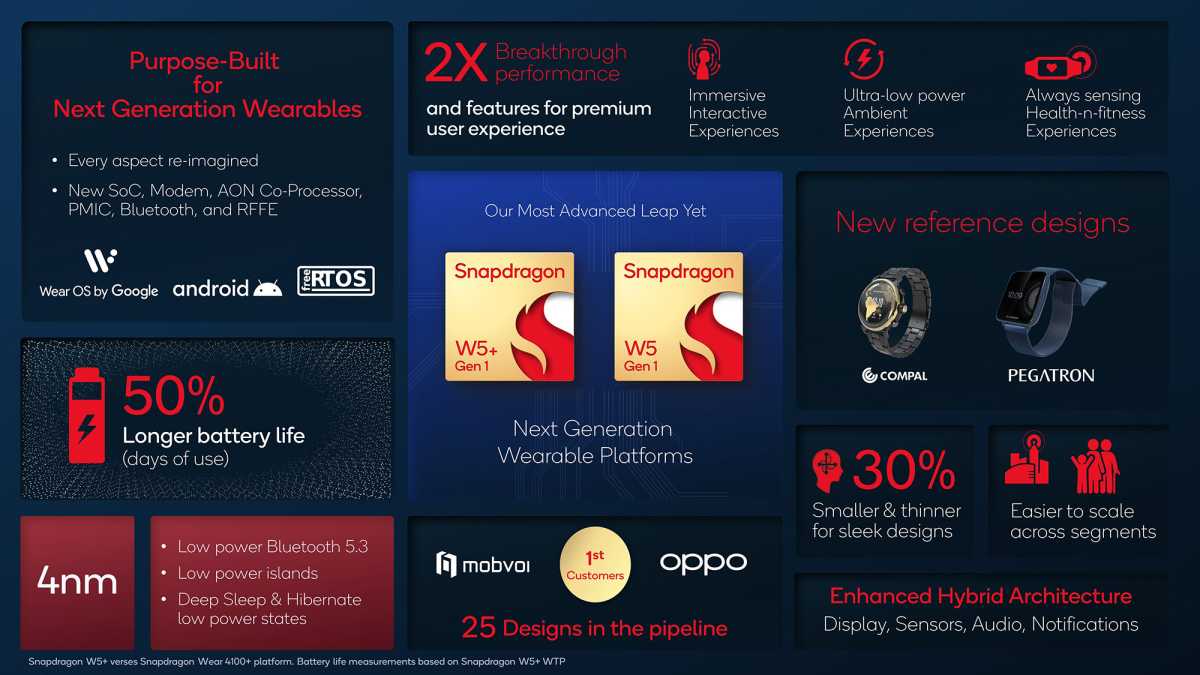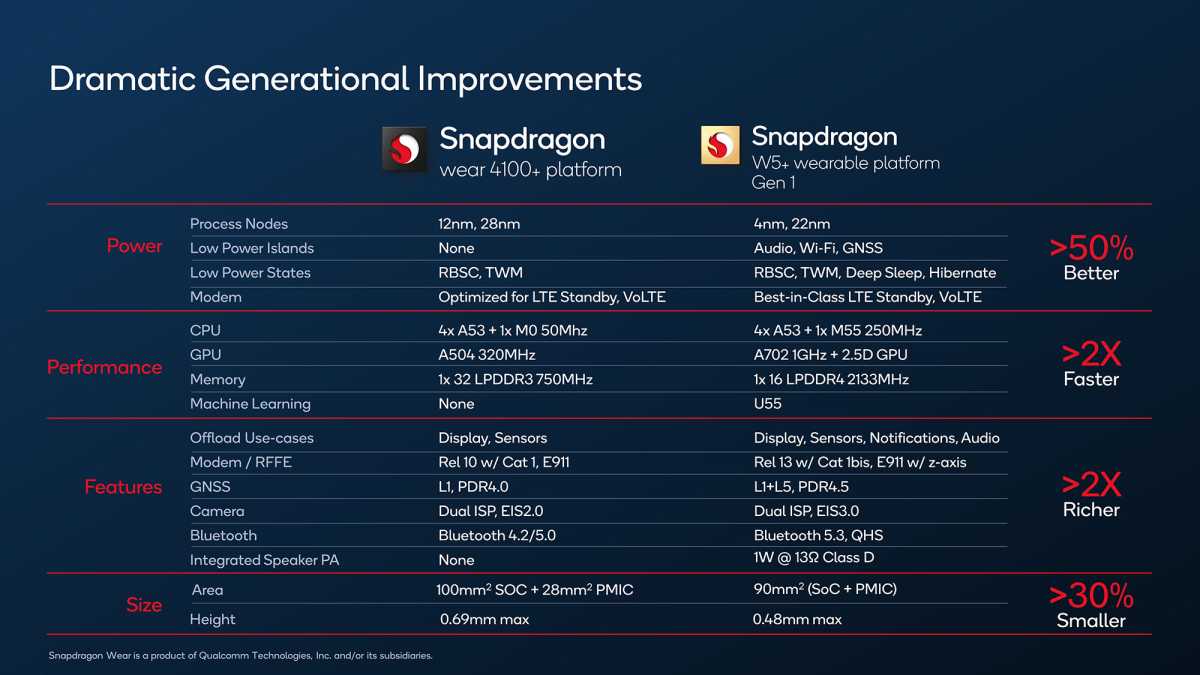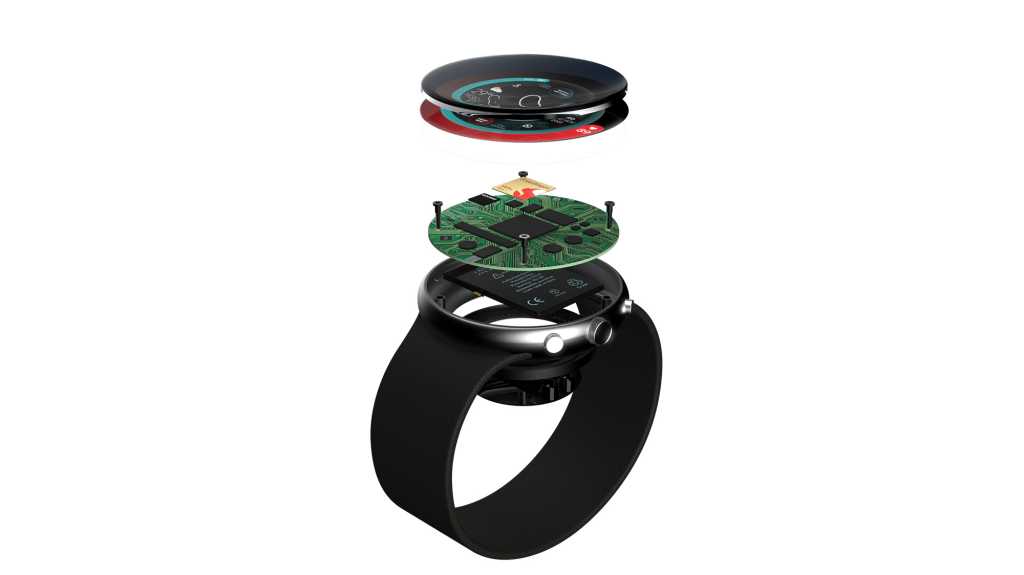Qualcomm has announced the Snapdragon W5 and W5+, its latest line of Snapdragon-branded smartwatch chipsets. They’re designed to power the next generation of Wear OS devices, with Oppo and Mobvoi the first to pledge their support.
It’s been over two years since the company’s last wearable chips, the Snapdragon Wear 4100 and 4100+. That time seems to have been well spent though, with Qualcomm promising “dramatic generational improvements” to battery life and performance that justify the long wait – and the rebrand.
The biggest change is that the W5 series are manufactured on a 4nm node – the same scale as the company’s latest Snapdragon 8+ Gen 1 smartphone chip. It sounds even more impressive when you realise that the 4100 series was built on a 12nm process, and their predecessors were 28nm.
The smaller manufacturing process brings with it impressive power-efficiency gains. Qualcomm says that W5+ watches should have 50% better battery life than 4100+ equivalents, enough to add whole extra days of usage depending on the device.
That’s possible not only thanks to the move to 4nm, but also considerable upgrades to the 22nm co-processor. This is intended to handle low-power tasks, which represent as much as 95% of a smartwatch’s use according to Qualcomm.
A combination of upgrades and structural changes mean this co-processor – and dedicated ‘low power islands’ on the main chip – can now handle audio, notifications, Bluetooth, health tracking, and more.

Qualcomm
The W5 series isn’t just more efficient though. The main chip is twice as powerful as its predecessor, enabling features like 3D watch faces, two-way video calling, and more mundane gains like smoother and more responsive navigation.
Just as importantly, the new chips are 30% smaller. That might not sound dramatic, but it will enable manufacturers to build substantially smaller smartwatches – or, if they prefer, pack in bigger batteries and extend longevity even further.
“The wearables industry continues to grow and present opportunities across multiple segments at an unprecedented pace,” said Pankaj Kedia, global head of smart wearables and senior director of product marketing at Qualcomm.
“The new wearable platforms – Snapdragon W5+ and Snapdragon W5 – represent our most advanced leap yet. Purpose-built for next generation wearables, these platforms address the most pressing consumer needs by delivering ultra-low power, breakthrough performance, and highly integrated packaging.”

Qualcomm
The difference between the W5 and the W5+ is that the former doesn’t include that extra co-processor. That doesn’t mean W5 watches will have dramatically worse battery life (at least, not necessarily) – but rather that manufacturers will be free to use other third-party microcontrollers to manage power consumption, or omit them entirely in the case of cheaper devices like kids’ watches that have fewer sensors, and so get fewer benefits from the extra chip.
Qualcomm also announced an even simpler Snapdragon W1 chip intended for specific, simple use cases such as accessories for smart glasses, XR headsets, and other wearables.
Alongside the new chips, Qualcomm confirmed the first devices set to feature the silicon. Oppo will go first, with the regular W5 confirmed to appear in the Oppo Watch 3 series, which will launch some time in August.
It will be a little longer for the W5+ to make an appearance, but it will power the next TicWatch flagship from Mobvoi, some time “this Fall.”
The Wear 4100 series saw limited adoption in the end, most notably appearing in the TicWatch Pro 3 and Fossil Gen 6 series. Qualcomm will be hoping the upgrades on offer here tempt more wearable manufacturers to adopt Snapdragon silicon, and it may be working – the company claims there are already over 25 designs in the pipeline.
Of course, we said similar things when the 4100 chips launched in June 2020, but this time the company’s work will be buoyed by Google’s own efforts to revamp Wear OS and build a genuine Apple Watch competitor – even bringing Samsung onside to use Wear OS for last year’s Galaxy Watch 4 and the upcoming Galaxy Watch 5.
The W5 series has been designed with support for Google’s Wear OS – including the latest Wear OS 3 – in mind, and Google has also thrown its weight behind the W5 launch with an endorsement of its “new levels of performance, capability and battery life.” The big question will be whether one of these chips powers the upcoming Pixel Watch, or even one of the next generation of devices from the company’s new subsidiary Fitbit.
Learn more about Qualcomm’s 2024 flagship phone processor, the Snapdragon 8 Elite.


